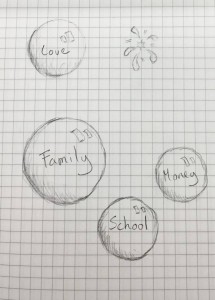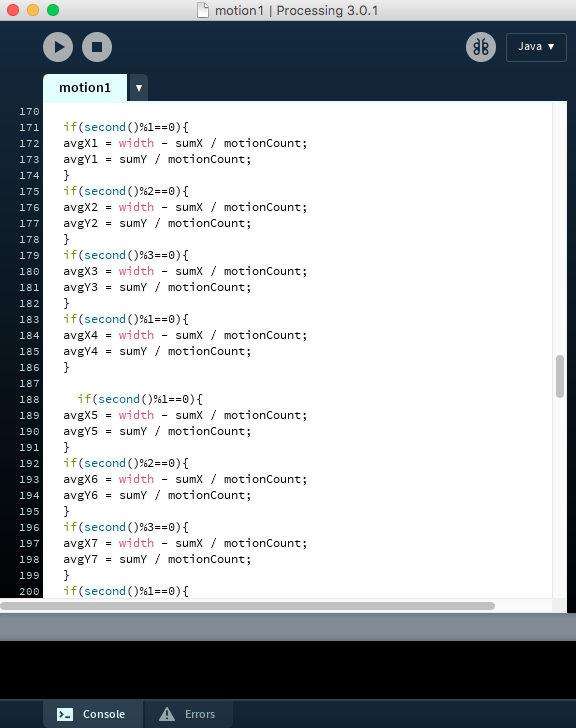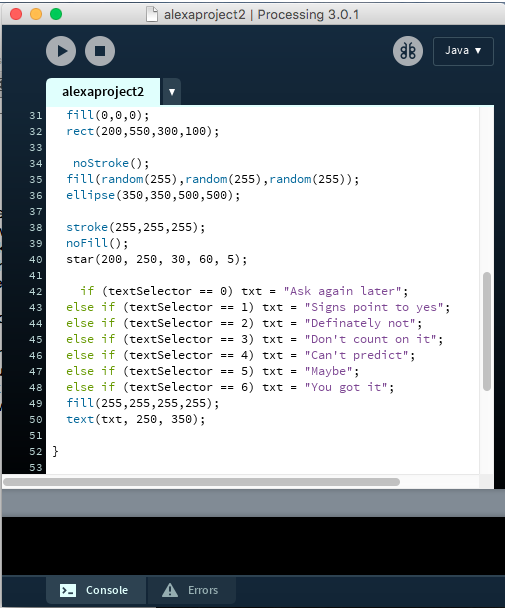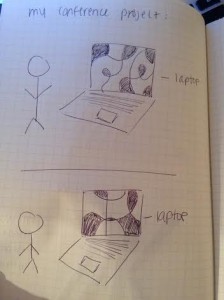
What are you making?
For my conference project, I will be making a passive webcam interactive. When first looking at the screen, the user will see a still black and white abstract pattern. This pattern will have many freeform shapes that will draw the viewer’s attention to the screen. Then, the camera will pick up the user’s movements and distort the image on the screen in accordance to the person’s movement. The abstract pattern that was first there will transform continually into new abstract patterns, as the person moves in front of the webcam. This allows the user to create their own patterns.
Why are you interested in making this interaction?
I’m interested in making this interaction because I think it is something new and different that will draw people’s attention. I think that it is a fun approach to using a webcam because instead of seeing an image of yourself, you’re seeing your movements reflected through an evolving pattern. This allows the user to have direct manipulation, but also allows the interaction to be open ended. In addition, I’m interested in making this interactive because I was inspired by Bridget Riley and Ryoji Ikeda. These two artists both use black and white shapes to create abstract and uniform patterns. I was really drawn to this style because I think that there is something so simplistic, yet captivating, about black and white art. Bridget Riley’s artwork consists of paintings that have ornate patterns and optical illusions. While her work is still, the illusions that she creates makes it appear to be moving. I thought that the effect that her art gives to the viewer was amazing because it makes people see more than just still shapes. Ryoji Ikeda’s work consists of more simplistic patterns, like thin stripes. His work is projected in a large room. The projector moves the patterns along the walls and floors, creating an impactful effect on the viewer. Both of these artists use black and white to give more definition to the shapes and patterns that they have created. I decided to combine both of the artists’ styles into my conference project because my project will include black and white abstract patterns and movement.
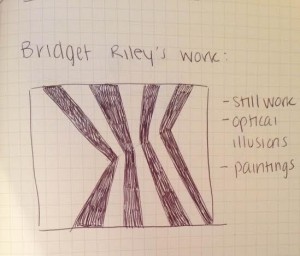
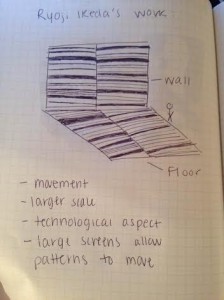
How do you expect it to work in public space?
I expect my project to work in a public space because it has a low barrier of entry. This means that people will be more inclined to try it because there is no pressure as to what you are supposed to do with the interaction. People can act freely and use it how they wish. There is no right way to use the interaction; there are endless possibilities. I think that these type of interactions are the most fun because it allows people to be creative. This will enforce the idea of a magic circle because this design allows multiple people to be interacting with it. Since it is based on movement, there can be multiple people in front of the camera. This will bring people together because they can interact with this project at the same time to create a unique image on the screen. After reading Martijn de Waal’s article, it is clear that this idea fits into the category of a “playground/magic circle” because this interaction fosters a site of play, is a voluntary activity, isn’t rational, and forms community. Although this interaction fits into all of these aspects, it is not autotelic because there is no ending goal for the user. They can play with the interaction as long as they want to. Therefore, I think that Castells would like this idea because it displays a network. Castels believes that “the concept of network to symbolize a society that is increasingly de-centred, flexible and individualized” (Gane + Beer, 20). This project is definitely flexible because it is very open ended. The user(s) can make any motions they want to change the image on the screen. It can also be individualized, depending on how many users there are.
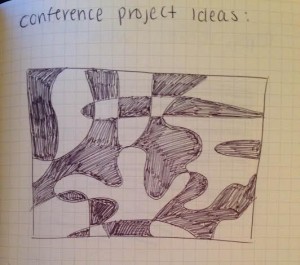
Norman’s seven steps:
Forming the goal: The user will see the black and white pattern on the screen.
Forming the intention: The user will approach the screen and see that the patterns moves.
Specifying the action: The user will understand that the pattern’s movement is controlled by their movements.
Executing the action: The user will then move themselves in front of the webcam and move in front of it.
Perceiving the state of the world: The user will change the pattern present on the screen.
Interpreting the state of the world: The user will understand that they have the power to make new art based on their physical movements.
Evaluating the outcome: From this experience, the user will see that they can create art in a new way.
Design:
I choose this for my design because I thought that a webcam interactive would have the least barrier of entry required. I think that these are the most enjoyable interactive because people are the most comfortable using them. Another option that I considered was to create a black and white abstract pattern that was controlled by the movement of the mouse, instead of the person’s movement. This idea would not involve a webcam and would therefore have a greater barrier of entry. Although both ideas are passive, I decided to go with the webcam one because it allows people to be more creative with their movements. A track pad would limit the movements they could make.
Code:
Draw(); The black and white shapes will be programmed to follow the motion picked up by the webcam.
Setup(); The background will be the webcam.
Variables: I will use variables for some of the shapes that will be repeated.
Color: I will only be using black and white in my project because I think that it will have the most impactful experience on the user.
Interactivity: The pattern on the screen with change according to the user’s movements.
